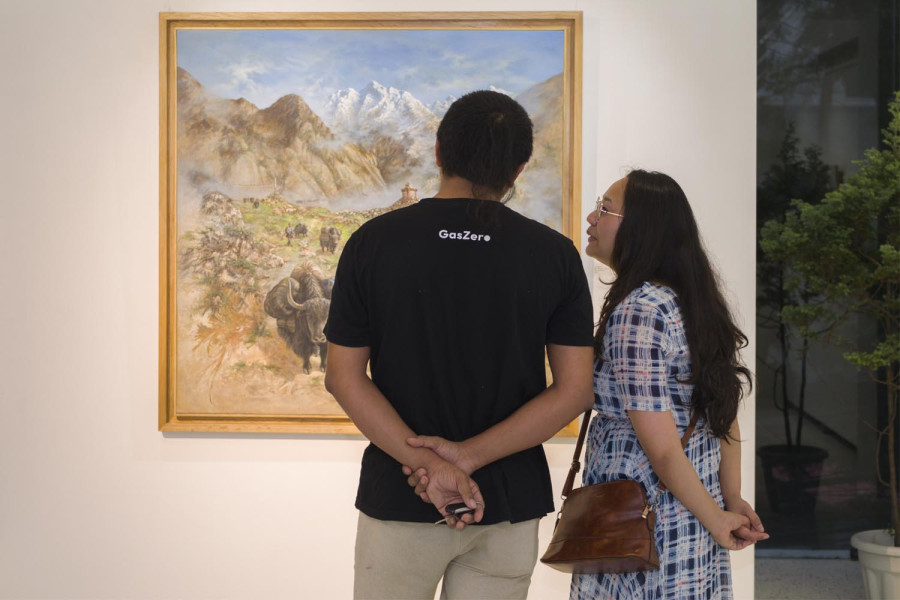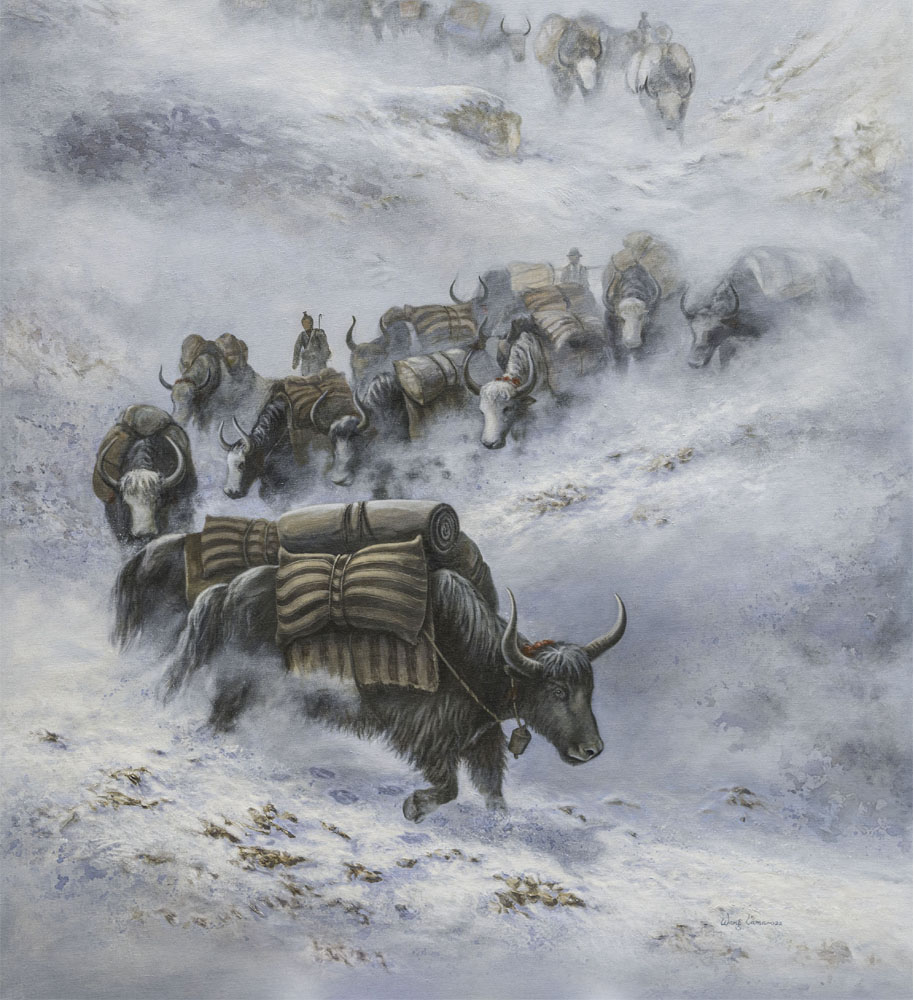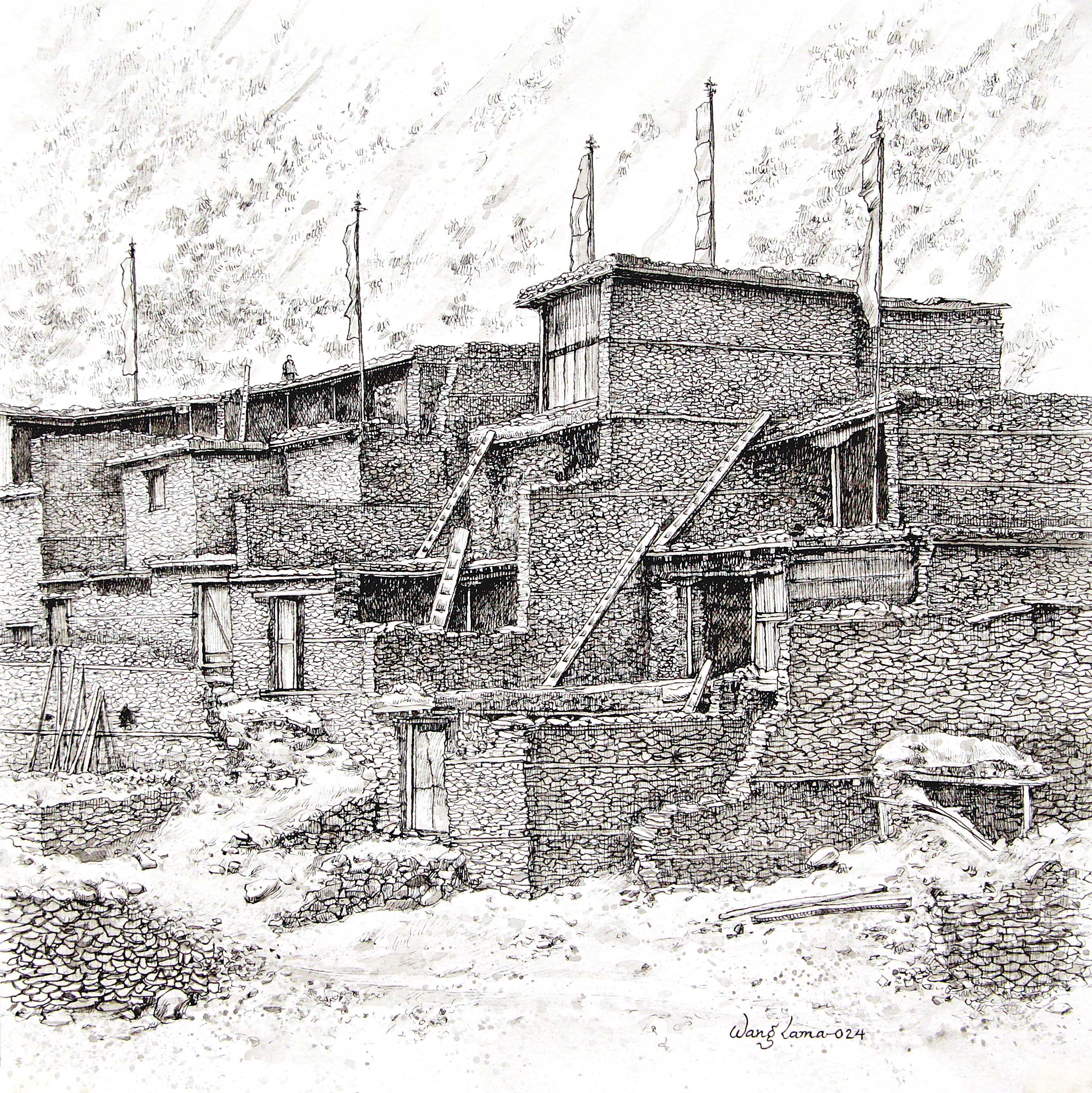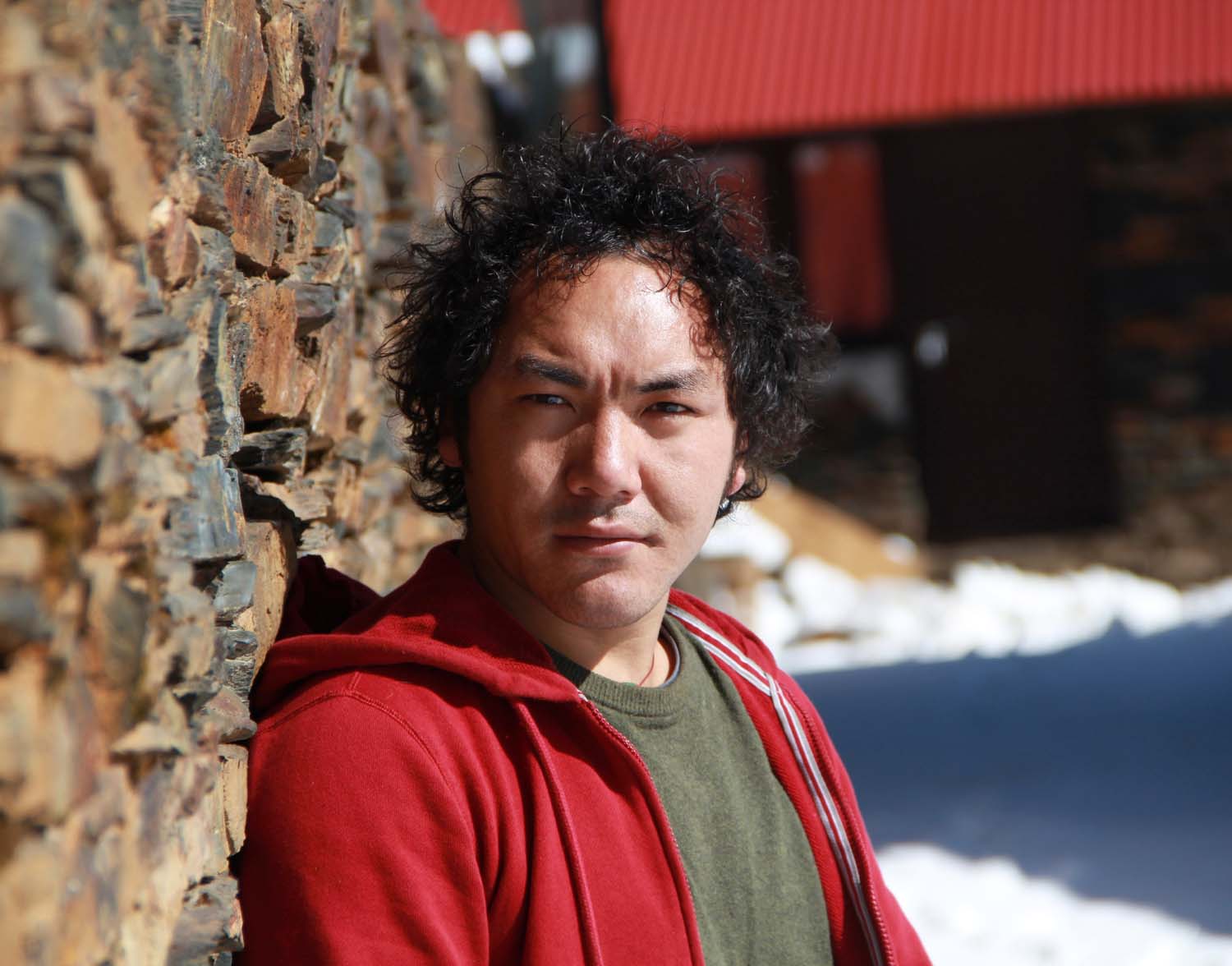Arts
Fleeting experiences
‘In Search of Vanishing Identities’ by Wang Lama explores the environmental and cultural erosion of the Himalayan region.
Anusha Dhakal
Experiencing the loss of cultural identity just as it begins to emerge brings profound sorrow, and Wang Lama feels this deeply. Migration and global warming have significantly contributed to the continuous erosion of Himalayan heritage in recent decades.
Switching between memory and reality, Wang Lama’s solo exhibition, ‘In Search of Vanishing Identities’, delves into the profound effects these challenges have had on Himalayan cultures and communities.
Through his work, Lama aims to capture a fleeting moment of disappearance, urging viewers to notice all that is on the brink of being lost. This includes not only tangible elements but also the intangible: the culture, language, customs, and traditions that have sustained and enlivened these communities for generations.
Set in the Himalayan communities of Humla, Manang, and Mustang, Lama's work authentically captures the essence of the region. It features yaks, Buddhist prayer wheels, and prayer flags. One particularly interesting piece, or pair of pieces, Caravan-I and Caravan-II, depicts yaks that appear to be on a trade route.
According to Wang, this is his attempt to capture the memory of how it used to be, illustrating the once-thriving trade of rock salt between Tibet and Nepal that sustained the livelihoods of the region.

The ways of life in this region have significantly changed. With globalisation, people can now get salt from sources other than Tibet, so local communities depend solely on tourism for their livelihoods. Additionally, the yak population has dropped significantly due to insufficient grazing lands.
The government has designated many areas as conservation zones, negatively affecting these communities. “The local communities were already conserving the land,” Wang reflects. “Declaring conservation areas without consulting the affected communities, from the confines of an enclosed office, is a disservice.”
Many families have left the region, migrating to cities or foreign countries, leaving these communities nearly deserted. This deeply saddens Wang. “In the past, stupas were built with the effort of at least one member from each household in the community.”
“Everyone participated by carrying stones. Building stupas had not just religious significance; it was also an opportunity for the community to collaborate, fostering deep connections. The act of working together to build a religious structure gave faith a whole new meaning. Their faith and love for God were genuine. Nowadays, concrete stupas outnumber the traditional stone structures,” Wang says, his sadness and disdain unmistakable.
A delightful recurring aspect of the exhibition is the presence of birds. From common sparrows and pigeons to the majestic Himalayan eagles and grandalas, birds are prominently featured throughout. Wang expresses his deep fondness for birds, “Birds help in pollination and are great for pest control, which aids agriculture. We believe that humans are above all animals, but that is not true. All creatures of the world need each other; we are all born to coexist.”
He also showcases artwork depicting holes in houses for pigeons to stay in Manang, highlighting the community's care for all creatures. “Compassion is the greatest beauty of the community,” he says, a note of reverence in his voice.
One striking artwork that caught my attention is ‘Tales of Stone’, a depiction of stone houses rendered in pen and ink on paper. When Wang said that carrying every brick to build the stupa is an act of faith, I felt that his meticulous drawing of each stone is his act of faith, an artist’s labour of love for something half-gone. This attention to detail, and Wang’s thoughtfulness, make ‘Tales of Stone’, my favourite piece in the exhibition.

He also explores the misconception that development must follow a linear trajectory, often associated with the construction of skyscrapers. “Imagine a skyscraper in Manang,” he says, “People don’t come to Manang to see skyscrapers because it's not Manang's identity.
It’s the stone and mud houses that define Manang's essence, and that is true beauty. In my opinion, finding sustainable ways to preserve what we have, and safeguarding everything we've built, is the greatest, most progressive form of development.”
In one of the watercolour paintings, a wall is adorned with faded, half-torn prayer flags, with a spinning prayer wheel at its centre. Each prayer wheel in the paintings is unique—some made of tin, others of leather—showcasing a rich diversity. Wang, a keen observer and gifted artist, captures these details with remarkable skill.

Wang’s attention to detail in this piece evokes a profound sense of lonely stillness. He reveals that there once existed a longer, extended wall, now broken. His conscious decision to paint only the remaining piece of the wall speaks volumes about his denial and his attempt to grasp onto what is vanishing, perhaps for the very last time.
As a travelling artist, Wang has the unique opportunity to experience and explore places firsthand, giving him the sensibility to capture everything before his eyes. This is evident in his work, which reflects an ardent attention to detail and deep sensitivity. He believes that if his works evoke emotions in people and make them notice what is fading away, it will be his greatest satisfaction. “The role of art is to sensitise people to recognise all that is disappearing before their eyes, often overlooked or ignored.”
While this exhibition captures the vanishing and erasure of Himalayan identities, it is equally a tribute to remembrance. It embodies the artist’s final, heartfelt effort to immortalise what once was, preserving its essence through the enduring power of art and imagination.
‘Vanishing Identities’
Where: Takpa Gallery, Lazimpat
Timings: 11:00am to 6:00pm (Tuesday to Thursday), 11:00am to 7:00pm (Saturday)
Till June 9




 22.65°C Kathmandu
22.65°C Kathmandu










